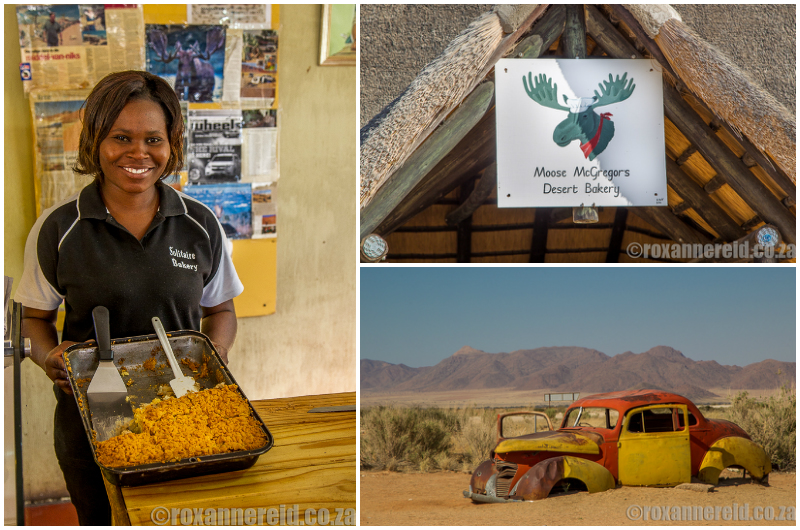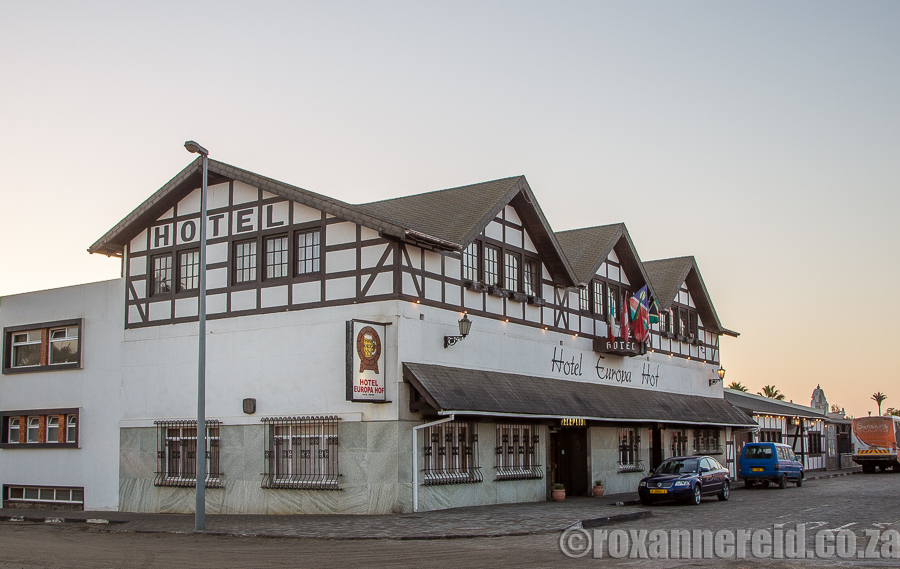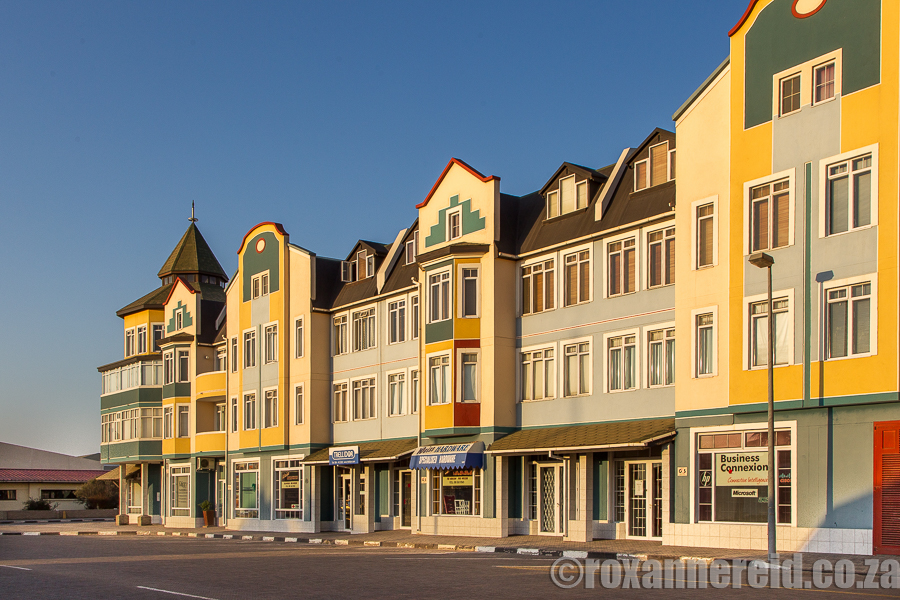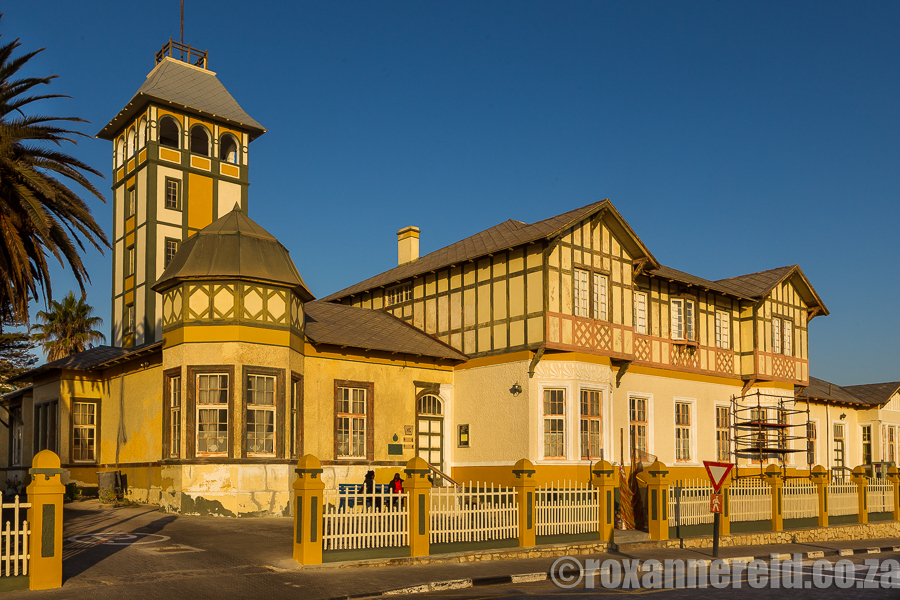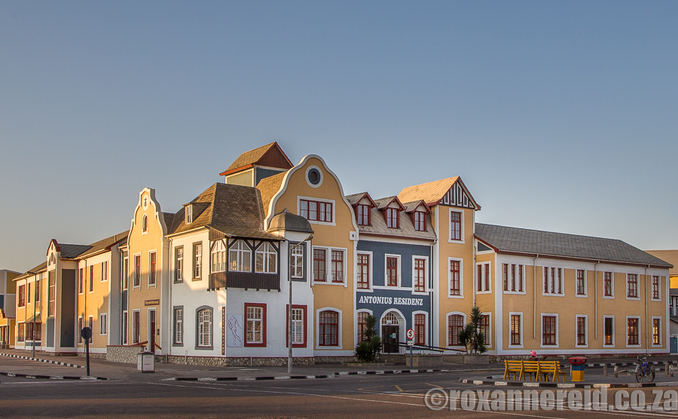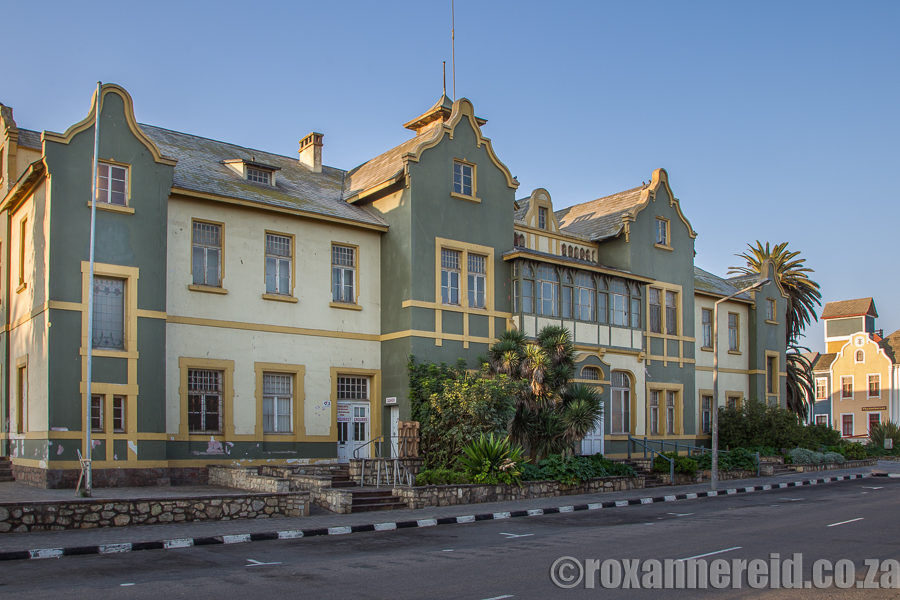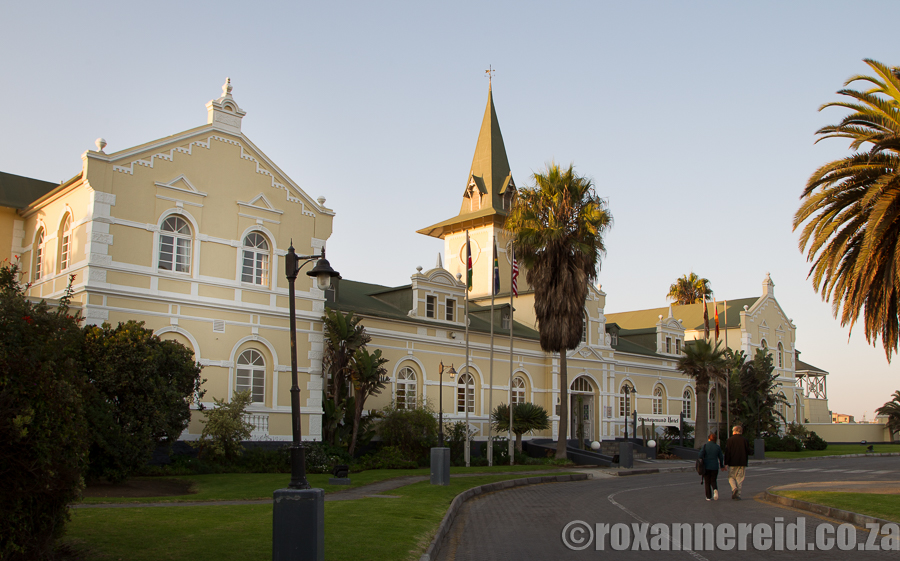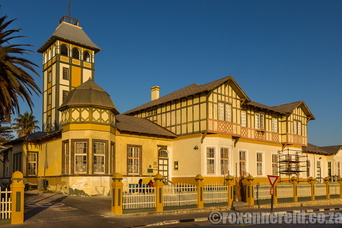
By Roxanne Reid
The coastal town of Swakopmund in Namibia is a favourite with holidaymakers who enjoy its laidback atmosphere, fresh air and beaches. It's carved out of the dunes between the Namib Desert and the ocean, and the breezes that blow off the icy Atlantic bring cooler temperatures here than inland. But for me Swakopmund is more about old buildings, desert and adventure than beaches.
The coastal town of Swakopmund in Namibia is a favourite with holidaymakers who enjoy its laidback atmosphere, fresh air and beaches. It's carved out of the dunes between the Namib Desert and the ocean, and the breezes that blow off the icy Atlantic bring cooler temperatures here than inland. But for me Swakopmund is more about old buildings, desert and adventure than beaches.
From Sossusvlei and Sesriem we’d driven the C14, which took us via Solitaire and over two scenic passes in the Namib Naukluft Park. Solitaire rose out of the dust and the heat like a windswept frontier outpost. Rusted trucks, a wheel-less yellow-and-orange car bellied out on the sand and some cacti were its main features. In fact they’re the only reason you’d slow down long enough to discover the fuel pump, country lodge, and small bakery-cum-tea-room.
This is home to the famous Moose McGregor’s apple crumble. Despite the death of this larger than life character a few years ago, the same staff is still baking, making it well worth the stop. Although the settlement is tiny (population 92, brags the sign), it’s not as solitary as its name would make you think: in the 20 minutes we were there I saw at least 10 cars and a fully loaded overland truck pull in either for fuel or to visit the bakery.
This is home to the famous Moose McGregor’s apple crumble. Despite the death of this larger than life character a few years ago, the same staff is still baking, making it well worth the stop. Although the settlement is tiny (population 92, brags the sign), it’s not as solitary as its name would make you think: in the 20 minutes we were there I saw at least 10 cars and a fully loaded overland truck pull in either for fuel or to visit the bakery.
Licking the last crumbs of apple pie off our lips, we drove the Gaub Pass, a series of sharp turns and twists around mountains, with steep drops into the riverbed below. Not long afterwards another pass loomed – the rock-strewn Kuiseb Pass, where the barren rock was so dark it looked burnt. A viewpoint here overlooks the Kuiseb Canyon and Carp Cliff, where two German geologists hunkered down because they didn’t fancy spending World War II in an internment camp. Their exploits were made into a book and movie called The Sheltering Desert.
Swakopmund gets a second chance
And so to Swakopmund. We hadn’t enjoyed it much on our first visit years ago, probably because we’d misjudged its popularity and arrived in the mad crush of school holidays. So we’d never been back despite numerous visits to Namibia. Now we wanted to give it a second chance. And we were glad we did.
And so to Swakopmund. We hadn’t enjoyed it much on our first visit years ago, probably because we’d misjudged its popularity and arrived in the mad crush of school holidays. So we’d never been back despite numerous visits to Namibia. Now we wanted to give it a second chance. And we were glad we did.
Swakopmund is 355km west of the capital Windhoek. It was established in 1892 as a harbour for the Germans, a kick-off point to the interior. Remember that Walvis Bay about 35km to the south belonged to the Brits at the time, and the Germans wanted a piece of the pie too.
Despite its size, Swakopmund still has quite a lot of wide sand roads, which give it a Wild West kind of appeal – until you look at the style of the buildings. Some of the most attractive historical buildings date back to the early 20th century, many of them in the ‘Wilhelminische’ style, named after Wilhelm II who was German Kaiser until the end of World War I when he abdicated and fled to the Netherlands to lick his wounds. Given the style’s flowing lines and ornate features, you might also call it Jugendstil or Art Nouveau.
Despite its size, Swakopmund still has quite a lot of wide sand roads, which give it a Wild West kind of appeal – until you look at the style of the buildings. Some of the most attractive historical buildings date back to the early 20th century, many of them in the ‘Wilhelminische’ style, named after Wilhelm II who was German Kaiser until the end of World War I when he abdicated and fled to the Netherlands to lick his wounds. Given the style’s flowing lines and ornate features, you might also call it Jugendstil or Art Nouveau.
It was a Saturday afternoon when we arrived, so the broad streets were almost deserted except for a few Harley-Davidson bikers who had just completed the three-day Skeleton Coast Rally. The quiet suited us perfectly, giving us space to wander the town in search of some of its most beautiful buildings. Even some of the newer buildings reflected the old German style, but with an updated, less fussy interpretation.
The lighthouse
The lighthouse
The lighthouse you can still see today was built in 1903 on higher ground than an earlier version on the Western end of the Mole that was swept away by a huge wave.
Kaserne
Kaserne
Despite its fort-like appearance the Kaserne was built in 1905 as a barracks; after all, no fort worth its salt would have such large, low windows. Living quarters were needed for the regiment sent to Swakopmund to fight the Herero uprising, and to build a landing pier and railway line to the interior. Today it’s a youth hostel.
Haus Hohenzollern
Haus Hohenzollern
Haus Hohenzollern was built as a hotel for Hermann Dietz in around 1906. Despite its elegance it had a racy reputation, reputedly used as a brothel and gambling house. The gambling got so out of hand that the magistrate revoked the hotel’s licence. It was converted to sectional title units in the 1980s.
Woermann House
Woermann House
Woermann House was originally built in 1894 and added to around ten years later. It was used as the headquarters of the Damara and Namaqua Trading Company, a subsidiary of German shipping company Woermann. The tower was used to store water. The building was later used for 40 years as a school hostel and restored for use as a public library in the 1970s.
Antonius building
Antonius building
The corner Antonius building dates to 1907 and was used as a Catholic hospital until 1987, when it became government offices. It was converted to an old age home in 2001.
Old post office
Old post office
The beautiful green-and-yellow municipal offices of modern Swakopmund started out life as a post office, telephone exchange and staff living quarters in 1907, built to plans drawn up by Gottlieb Redecker.
Old railway station
Old railway station
The old railway station, designed by Carl Schmidt in the ‘Wilhelminische’ style, was built in 1902. Since 1994 it has been part of the Swakopmund Hotel, which today still evokes a feeling of bygone elegance with its squashy sofas, high windows and intricate ceilings. Listen to the rustle of palm trees and the trickle of water fountains, or gaze up at the square tower with its steep pointed roof, which could be a Hogwarts sorting hat.
Adventure capital
If you’re not into old buildings or historical sites, you’ll be relieved to know that these days Swakopmund is considered the adventure capital of Namibia – anything from sand boarding, paragliding, sky diving and hot air ballooning to microlighting, quad biking, horse trails, fishing or sand safaris.
Adventure capital
If you’re not into old buildings or historical sites, you’ll be relieved to know that these days Swakopmund is considered the adventure capital of Namibia – anything from sand boarding, paragliding, sky diving and hot air ballooning to microlighting, quad biking, horse trails, fishing or sand safaris.
You can get a permit from the Ministry of Environment and Tourism office in town and drive out of town along a 140km route into the ‘badlands’ to see strange welwitschia plants and a bare, inhospitable moon landscape. Don’t do it too early when it may still be covered in fog. Better yet, sign up for a guided drive to get the most out of an afternoon among rock formations, the amazing long-lived welwitschia, ‘living stone’ succulents, wildlife and lichen fields.
If you have a morning to spare, I can highly recommend taking a Living Desert Tour into the dunes just outside town with Tommy Collard. He’ll show you a fascinating landscape stuffed with miraculous desert-adapted creatures. The kids will love it too.
Food
If you work up an appetite with all that activity, there are lots of popular coffee shops and restaurants to choose from in Swakopmund, offering everything from German-style coffee and cake to pure Namibian plates heavy with meat and seafood, and of course ice-cold beer by the bucketload.
You may also enjoy:
Swakopmund’s dunes are more alive than you think
Oudtshoorn’s buildings – a photo blog
Copyright © Roxanne Reid - No words or photographs on this site may be used without permission from roxannereid.co.za
If you have a morning to spare, I can highly recommend taking a Living Desert Tour into the dunes just outside town with Tommy Collard. He’ll show you a fascinating landscape stuffed with miraculous desert-adapted creatures. The kids will love it too.
Food
If you work up an appetite with all that activity, there are lots of popular coffee shops and restaurants to choose from in Swakopmund, offering everything from German-style coffee and cake to pure Namibian plates heavy with meat and seafood, and of course ice-cold beer by the bucketload.
You may also enjoy:
Swakopmund’s dunes are more alive than you think
Oudtshoorn’s buildings – a photo blog
Copyright © Roxanne Reid - No words or photographs on this site may be used without permission from roxannereid.co.za

